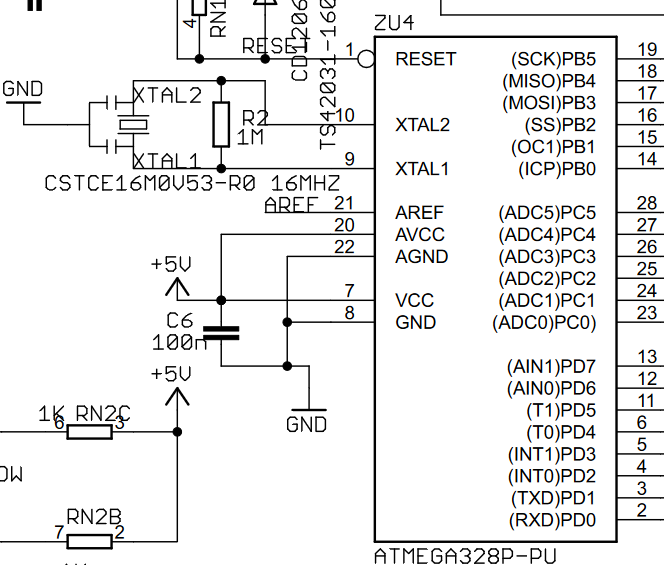(Using VSCode with PlatformIO IDE and Arduino UNO Rev3, witch have a ATmega328P microprocessor)
Hi, I started learning about embedded systems’ firmware developmenent using register manipulation. My first goal is to make a “Hello World” program:
Serial.begin(9600);
Serial.print("Hello world");
But directly setting register values to reproduce the same result as the code above.
Following the USART section of ATmega328P, I develop:
#include <Arduino.h>
// USART initialization parameters
#define FOSC 8000000 // Clock speed
unsigned int UBRRnAsynchronousNormalMode(int desiredBaud){
return (FOSC/(16*desiredBaud))-1;
}
void serialBegin(unsigned int UBRRn){
// Setting baud rate
UBRR0H = (unsigned char) (UBRRn>>8);
UBRR0L = (unsigned char) UBRRn;
// Defining frame format
UCSR0C = (1<<USBS0) | (3<<UCSZ00);
// Enabling transmiter
UCSR0B = (1<<TXEN0) | (1<<RXEN0);
}
void serialPrint(unsigned char data){
while(!(UCSR0A & (1<<UDRE0)));
UDR0 = data;
}
void setup() {
serialBegin(UBRRnAsynchronousNormalMode(9600));
serialPrint('1');
}
The Serial Monitor says “Terminal on COM5 | 9600 8-N-1”, but my print results in:
![]()
Sounds like a common baud rate disparity problem, but as I understand, I set my rate to 9600 (same as indicated by the Serial Monitor). Have I made an error in the code, or missed some step to reproduce a Serial.print()?
